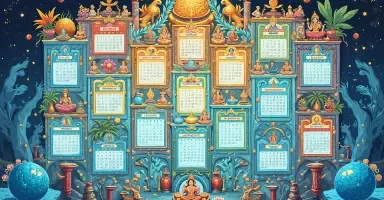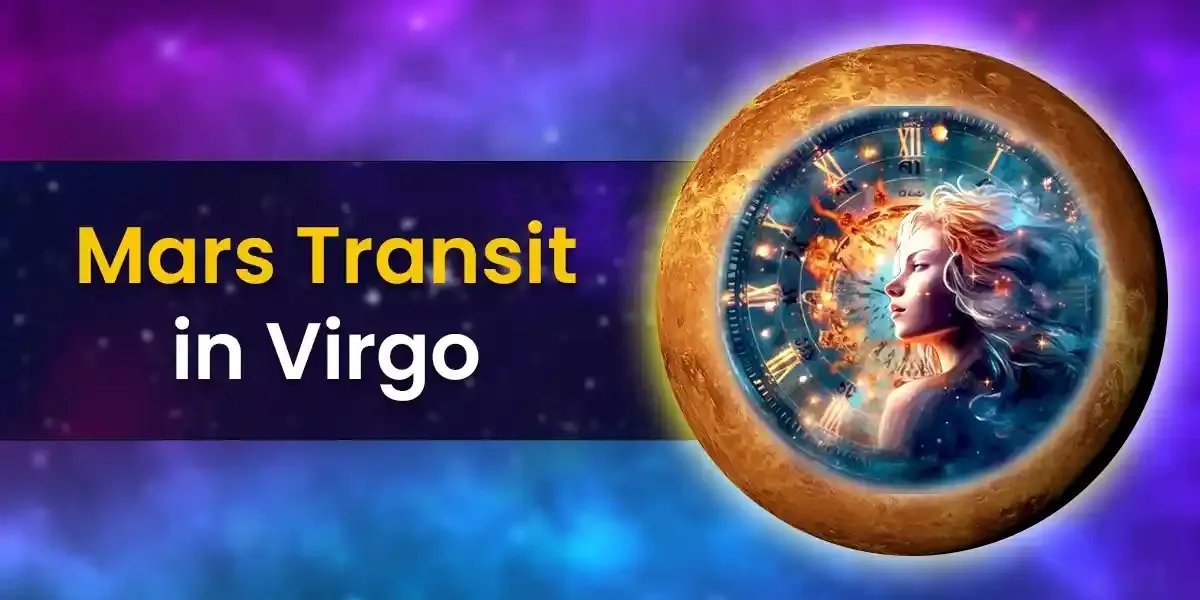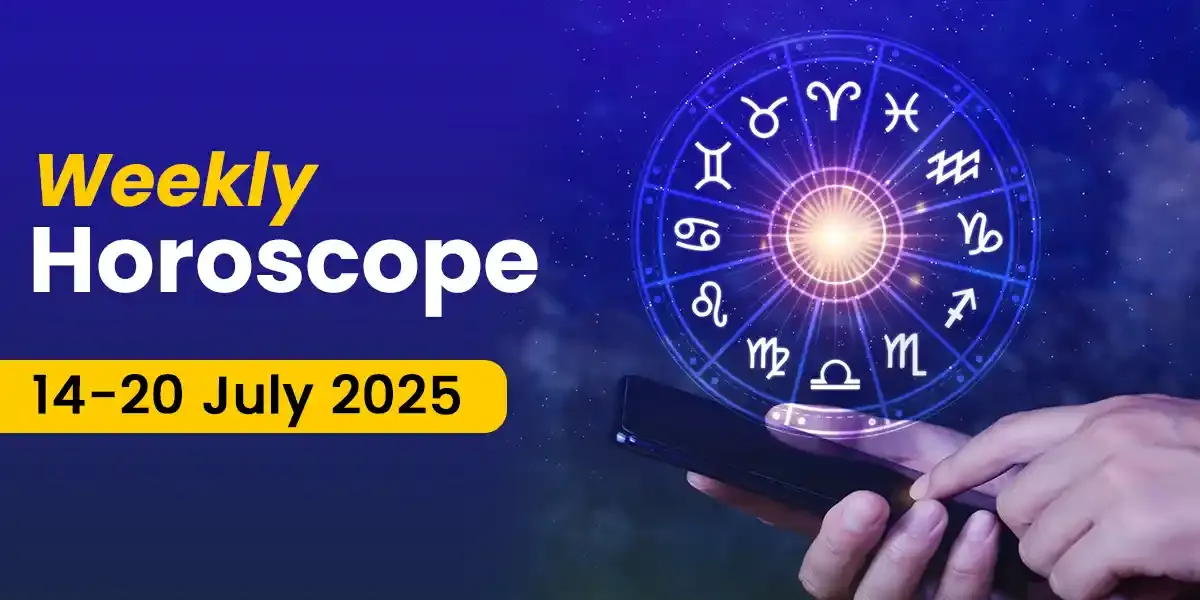
Panchang - Hindu Calendar
A Panchang, also known as Panchangam, is a detailed Hindu calendar that resorts to the traditional units of the Indian scriptures to provide information relevant to astrologers for them to forecast planetary occurrences and mark auspicious and inauspicious time frames for important occasions such as rites, rituals, festivals, marriage, education, investments, and other important activities of life. You can stay informed about the year's events and significant festivals by using the Hindu Panchang and calendars.
Today’s Panchang
Ujjain, Wednesday, 16 July 2025
| Date | Wednesday, 16 July 2025 |
| Tithi | Krishna Shashthi |
| Day | Wednesday |
| Paksha | Krishna-Paksha |
| Sunrise | 05:34:51 AM |
| Sunset | 07:11:40 PM |
| Moonrise | 10:54:52 PM |
| Nakshatra | Uttra Bhadrapad |
| Yog | Atigand |
| Yog Till | 09:29:32 AM |
| Nakshtra Till | 04:51:24 AM |
| Karan I | Vanija |
| Surya Rashi | Gemini |
| Chandra Rashi | Pisces |
| Rahu Kal | 12:23:16 PM to 02:05:22 PM |
What You Need to Know About The Hindu Calendar?
Hindu calendars are divided into two categories
- Solar calendar (Surya ganana), which is based on the Sun's entry into different zodiac signs.
- Lunar calendar (Chandra ganana) which is based on the Moon's transit.
However, the majority of the calculations are based on the Moon's orbit. Panchang uses the lunar month system to measure time, with each month's name indicating the Moon's passage through each Nakshatra. Our Panchang follows the lunar calendar calculation, which is the most popular Hindu calendar in India.
Panchang: What Are Its Elements?
The Sanskrit word Panchangam, also known as Panchang, is made up of two words: panch, which means five, and ang, which means parts. Panchang is created by taking into account five aspects or elements of traditional Hindu timekeeping: Tithi, Nakshatra, Yog, Vaar, and Karana. Let's understand each of these elements in more detail.
Tithi
According to the Hindu Panchang, there are approximately 30 Tithi (Lunar Days) per month. The first fifteen days are called Shukla Paksha, and the later fifteen days are known as Krishna Paksha. These are the two phases of the Moon's waxing and waning periods, respectively.
In the Hindu calendar, Purnima Tithi (full Moon) and Amavasya Tithi (no Moon) happen once a month. Purnima is considered the 15th Tithi, Amavasya is considered the 30th Tithi, and other Tithis occur twice a month. These include Pratipada, Dwitiya, Tritiya, Chaturthi, Panchami, Shashti, Saptami, Ashtami, Navami, Dashami, Ekadashi, Dwadashi, Trayodashi, and Chaturdashi.
Nakshatra
A Nakshatra, derived from the Sanskrit word "Naksha" meaning map and “Tara" meaning star, determines the position of the stars at a given time of the day based on the Moon's position in the birth chart. In Indian Vedic astrology, there are 27 Nakshatras. In Muhurtha astrology, there is also a 28th Nakshatra known as the Abhijeet Nakshatra. Every Nakshatra is thought to be advantageous or appropriate for a specific task in Hinduism. These include getting married, Griha Pravesh or housewarming, the Namkaran ceremony, purchasing a new car or house, starting a new job or business, and so on.
Yog
A Yog is formed by the combination of the Sun and the Moon. In Vedic astrology, there are 27 Yogs or Yogas. These Yogs can be both auspicious and inauspicious. Each Yog is useful for one day in a person's life.
Karan
A half-Tithi is referred to as a Karana, meaning two Karanas equal one Tithi. There are 11 Karans in total in astrology. Seven Karans are movable, and four are stationary. Eight of these Karans fall within a lunar month. There are two Karans called the Purvardha and Uttarardha Karan every day.
Vaar
Vaar refers to the time between one sunrise and the next sunrise. There are seven Vaars, namely Ravivaar (Sunday), Somvaar (Monday), Mangalvaar (Tuesday), Budhvaar (Wednesday), Brihaspativaar (Thursday), Shukravaar (Friday), and Shanivaar (Saturday).
Festival List
- Nag Panchami
- Raksha Bandhan
- Janmashtami
- Ganesh Chaturthi
- Onam
- Pitru Paksha
- Shardiya Navratri
- Durga Puja
- Dussehra
- Karwa Chauth
- Dhanteras
- Diwali
- Govardhan Puja
- Bhai Dooj
- Chhath Puja
- Tulsi Vivah
- Guru Nanak Jayanti
- Christmas
- New year
- Lohri
- Pongal
- Makar Sankranti
- Vasant Panchami
- Shivratri
- Ramadan
- Holi
- Good Friday
- Navratri
- Gudi Padwa
- Ugadi
- Vaisakhi
- Ram Navami
- Mahavir Jayanti
- Hanuman Jayanati
- Buddha Purnima
- Akshay Tritiya
- Shani Jayanti
- Guru Purnima
- Hariyali Teej
What's the importance of Panchang? Why is it Necessary?
In Hinduism, auspicious work is not performed without first consulting the Panchang. The Indian Hindu calendar holds significant value in Vedic astrology and has been used in India for thousands of years. Hindus consult Panchang for any auspicious occasion or function, as it provides detailed knowledge and significance of a specific date and time period.
It is believed that if one is going to embark on a new journey or task, be it a business, career, marriage, etc., one should do so at the right time, which can be found by checking the Panchang.
The Hindu calendar is based on the positions of celestial bodies. Hindu Panchang offers valuable information to astrologers and anyone interested in astrology by calculating significant astrological data. Astrologers use a Panchangam to determine auspicious times and other crucial astrological details for different social and religious events. In a traditional Hindu society, panchang is important in determining the appropriate day and time for performing rituals.
Without a Panchang, we are unable to determine an auspicious day and time. The Vaar, Karan, Yog, Nakshatra, and Tithi are used to determine whether a Muhurta is good or bad.
How Is Panchang Beneficial?
The study of Panchang is the fundamental understanding of Rashi Phala in English, the impact of each of the 12 zodiac signs on an individual, and how their day-to-day lives change based on several movements of the planets. The casting of a Panchang requires detailed mathematical work involving a high level of spherical geometry and an in-depth understanding of the movements of the planets and the stars.
- Panchang is created for the fundamental purpose of providing information on how a day might look, how people should optimize the 'Shubh' or positive span of time in order to lead a happy and prosperous life, and what they should refrain from doing at negative hours of the day to avoid problems.
- Panchang is optimally utilized in Hindu culture for planning important events and functions in a person's life. Panchang matches the current planetary configurations with the position of the heavenly bodies in a person's astrological chart so that auspicious days and times can be pin-pointed in their best interests.
- The Panchang is also used to calculate a person's Vedic birth chart or natal chart. The calculations done to create a Panchang are based upon the position or movement of planets, stars, or Nakshatra in a certain sign at certain degrees. These calculations represent how these movements and transitions are supposed to affect a person on a particular date and can be done to minimize the negative effects and maximize the positive effects.
- With the help of Panchang, you can accurately plan your job interviews, travel plans, investments, festivals, pujas, and the beginning of any significant tasks.
How is an Online Panchang Useful?
If you follow the Hindu calendar and need real-time Panchang information, Astroyogi's online Panchang calculator is your best bet. Our Panchang tool is available on both the app and website, enabling you to get the precise Panchangam details you need within a few clicks from any location and at any time.
In addition, it's important to know that Panchang details may differ for two different places or locations at the same time. Even within a country, Panchang for different cities can vary simultaneously. As a result, checking Astroyogi's online Panchang can be extremely helpful in determining the correct times for making decisions.
So go ahead and use our online Panchang tool to find out when things will be good in the current day or in the days to come and to improve your chances of succeeding in all the different aspects of life.
Talk to Astrologers
View AllFrequently Asked Questions
Panchang is a traditional Hindu calendar that indicates the day's favorable or unfavorable hour and time, also called Muhurat, of the day. It determines whether or not the day is auspicious and appropriate to carry out a particular task.
Reading a Panchang is quick and easy at Astroyogi. Once you have entered the required details, like the date, day, year, and place, our online Panchang calculator will show you the results containing all the necessary information. If you need further guidance in reading and understanding the Panchang correctly, or if you want more personalized insights, you can consult astrologers at Astroyogi.
To find your Panchang information, you simply need to fill in the details, like date, month, year, and location, on our online page. The information will then be displayed on the screen in tabular format.
There are two types of Panchang in Vedic or Hindu tradition. First is the solar calendar, which is based on the Sun's transit, while the second is the lunar calendar, which is calculated using the movement of the Moon. The latter is the most commonly used Hindu Panchang, used by Astroyogi as well.


























 Tarot Sonia | Fri, May 02, 2025
Tarot Sonia | Fri, May 02, 2025
 Team Astroyogi | Fri, May 02, 2025
Team Astroyogi | Fri, May 02, 2025



